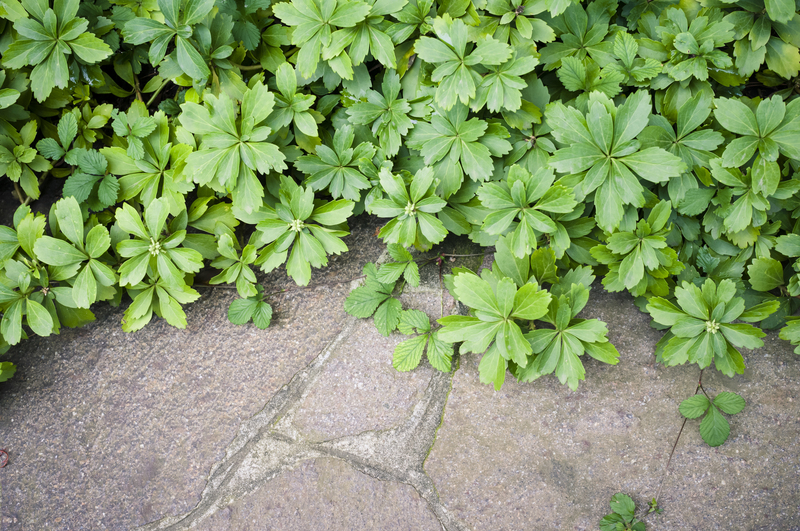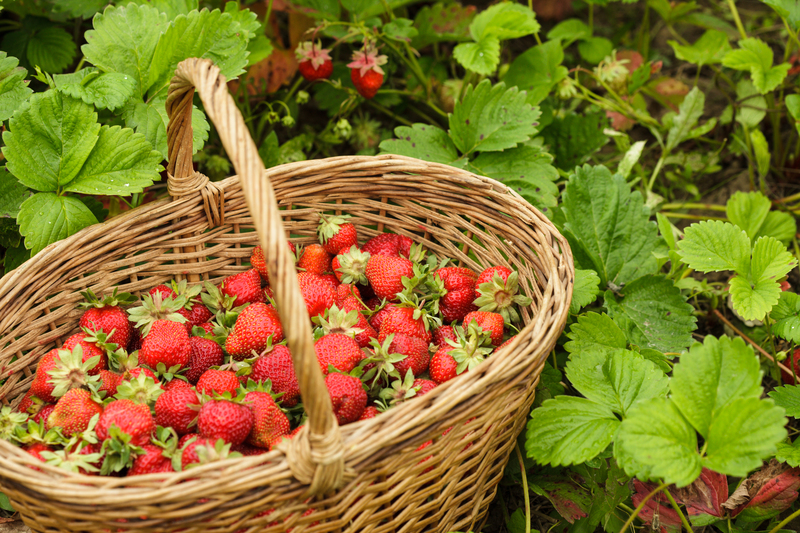Revitalizing Waste into Nutrient-Packed Earth
Posted on 06/09/2025
Revitalizing Waste into Nutrient-Packed Earth: A Pathway to Sustainable Soil Health
Waste is more than just unwanted leftovers. When transformed with the right techniques, it can become a powerhouse for soil fertility and a cornerstone for environmental sustainability. In this comprehensive guide, we will explore how revitalizing waste into nutrient-packed earth can benefit gardens, agriculture, and the planet.

Understanding the Concept of Revitalizing Waste into Nutrient-Packed Earth
Transforming waste into nutrient-rich earth involves processing organic materials--like food scraps, yard debris, and agricultural byproducts--into a form that nourishes soil and promotes plant growth. This process, known as composting or organic recycling, reduces landfill waste while creating a valuable resource for gardens and farms.
What is Nutrient-Packed Earth?
Nutrient-packed earth refers to soil that has been enriched with organic matter, improving its structure, water retention, and nutrient content. This type of soil supports robust plant growth and helps establish a sustainable ecosystem.
Why Revitalize Waste?
- Reduce landfill overflow: Organic waste makes up a significant proportion of municipal solid waste.
- Decrease greenhouse gas emissions: Composting organic waste reduces methane emissions, a major contributor to climate change.
- Enhance soil fertility: Nutrient-enriched earth from composting boosts plant productivity.
- Support biodiversity: Healthy soil fosters microorganisms and beneficial insects.
The Science Behind Waste Transformation
The process of creating nutrient-rich soil from waste is both an art and a science. Harnessing the natural decomposition of organic matter, you can turn what was once considered waste into a powerful tool for sustainability.
Composting: The Heart of Revitalization
Composting is the controlled decomposition of organic waste by microorganisms found in soil. By providing the right balance of carbon, nitrogen, moisture, and air, waste materials break down into dark, crumbly, earthy-smelling compost rich in nutrients.
- Carbon-rich materials (browns): Dry leaves, straw, cardboard, paper
- Nitrogen-rich materials (greens): Food scraps, grass clippings, coffee grounds
The key to successful composting is balance. Too much carbon slows decomposition; too much nitrogen may cause odors. The ideal carbon-to-nitrogen ratio is about 30:1. Microorganisms such as bacteria, fungi, and actinomycetes work together, supported by macro-organisms like worms and insects.
Vermicomposting: Harnessing Worm Power
Vermicomposting utilizes earthworms (often red wigglers) to eat organic waste and excrete castings--one of the most nutrient-dense natural fertilizers available. This microbially active process can be done indoors or outdoors, making it accessible for households with limited space.
- Efficient breakdown of food scraps
- Generation of worm tea (a potent liquid fertilizer)
- Low odor and easy management
Types of Organic Waste for Soil Enrichment
Not all waste is equal. Some waste materials bring unique benefits to the compost pile, while others should be avoided.
Suitable Organic Waste Types
- Fruit and vegetable scraps
- Coffee grounds and tea bags
- Grass clippings and yard trimmings
- Eggshells
- Shredded newspaper and cardboard (uncoated)
- Dead leaves and straw
Waste to Avoid in Composting
- Meat and dairy products (attract pests, cause odors)
- Oily foods and fats
- Pesticide-treated materials
- Dog and cat feces
- Diseased plants
From Waste to Nutrient-Packed Earth: Step-by-Step Guide
Revitalizing waste into nutrient-rich soil can be achieved in your backyard, community, or even on a commercial scale. Here's how to get started:
1. Choose a Location
Select a well-drained site that gets partial sunlight. Compost bins or piles should be easily accessible year-round.
2. Prepare Your Compost Bin
- Purchase or build a compost bin using wood pallets, wire mesh, or plastic.
- Ensure good air flow to maintain aerobic decomposition.
3. Gather and Layer Materials
- Alternate layers of "greens" and "browns". Start with coarse materials at the bottom for drainage.
- Each new batch should be covered with soil or finished compost to introduce decomposing micro-organisms.
4. Monitor and Maintain
- Keep the pile moist, like a wrung-out sponge.
- Turn or aerate the compost regularly to provide oxygen and speed up decomposition.
5. Harvest and Cure
- Compost is ready when it is dark, crumbly, and earthy-smelling with no recognizable contents.
- Allow it to "cure" for a few weeks before use, letting microbial activity stabilize nutrients.
Environmental and Economic Benefits of Transforming Waste into Nutrient-Packed Earth
Turning waste into rich soil is not just an eco-friendly practice; it also brings many other benefits:
- Reduces the cost of chemical fertilizers and soil amendments for gardeners and farmers.
- Lowers waste management expenses for municipalities and private companies.
- Decreases pollution by reducing reliance on synthetic chemicals and lowering greenhouse gases.
- Improves local food security through increased yields and healthier crops.
Case Studies: Community Composting Success
Cities around the globe, including San Francisco, Stockholm, and Toronto, have adopted organic waste collection and turned it into compost for public parks, community gardens, and even agricultural land--dramatically cutting landfill input and revitalizing local soil.
Nutrient Cycle in Action: How Revitalized Earth Fuels Plant Growth
Healthy soil teems with life. When nutrient-rich compost is added to the ground, it:
- Enriches soil with organic matter and micronutrients, fueling microbial and plant life.
- Improves soil structure and water retention, reducing erosion and water use.
- Binds nutrients, minimizing leaching and promoting long-term fertility.
- Enhances disease resistance in plants by supporting a balanced soil ecosystem.
Utilizing Revitalized Waste for Maximum Yield
Whether you are growing tomatoes in your backyard or cultivating acres of farmland, incorporating compost at planting or as a side-dress can greatly boost crop yield and quality. Revitalizing waste into potent earth is a natural, cost-effective way to build resilience in your garden or farm.
Innovations and Advanced Techniques in Waste Revitalization
Recent advances are making the process more efficient and accessible than ever before.
Biochar Production
Biochar is a form of charcoal produced from agricultural waste through pyrolysis. When added to soil, it improves nutrient retention and supports microbial activity, leading to long-lasting soil fertility.
Bokashi Fermentation
Bokashi composting uses beneficial microbes to ferment kitchen waste in airtight containers, producing compost ready to enrich soil in just a few weeks--even accepting dairy and small amounts of meat.
Industrial and Municipal-Scale Composting
Large-scale facilities use controlled environments, temperature regulation, and mechanical aeration to quickly process vast volumes of organic waste--turning city-wide scraps into nutrient-rich earth for landscaping and farming.
Tips for Effective Waste-to-Earth Transformation
- Chop or shred materials to increase surface area and speed up decomposition.
- Avoid overwatering, which can generate odor and slow composting.
- Add finished compost or garden soil to each new pile to jumpstart microbial activity.
- Monitor temperature. Active compost piles heat up; if it cools, it may need turning or water.
- Cover food scraps with "browns" to reduce pests and flies.
Challenges and Considerations
While composting is rewarding, it does require thoughtful management:
- Pest control: Secure compost bins and avoid meats to keep pests away.
- Space limitations: Consider vermicomposting or community solutions if you lack outdoor space.
- Time: Compost may take weeks to months to mature, depending on conditions.
- Contamination risk: Avoid adding synthetic chemicals or diseased plants to your pile.

Global Impact: The Future of Waste Upcycling into Earth
As human populations grow and environmental pressures mount, the need to upcycle waste into nutrient-rich soil becomes even more urgent. Schools, organizations, and governments are running education campaigns and building infrastructure to transform organic waste from an environmental liability into a local asset.
- Carbon sequestration: Healthy soils absorb and store far more carbon, mitigating climate change.
- Urban agriculture: City gardens thrive on compost, reducing food miles and urban heat.
- Regenerative farming: Farmers are using compost to restore damaged soils and promote enduring fertility.
What You Can Do Today
Even small actions make a difference. Try starting a compost pile at home, join a community garden, or advocate for local compost collection. By revitalizing waste into nutrient-packed earth, you are investing in a healthier, greener, and more vibrant world.
Conclusion: Embrace the Revitalization Revolution
Transforming waste into nutrient-rich earth is a simple yet powerful step towards a more sustainable future. By returning organic matter to the soil, you help invigorate gardens, boost agricultural productivity, reduce environmental impact, and restore vital ecosystem services.
Whether you're an urban dweller with a balcony or a farmer on acres of land, waste revitalization is accessible and profoundly impactful. Embrace this revolution, and watch your soils--and your planet--thrive.
Related Resources
Start revitalizing your waste today and transform your environment, your health, and the planet's future--one handful of nutrient-packed earth at a time!

